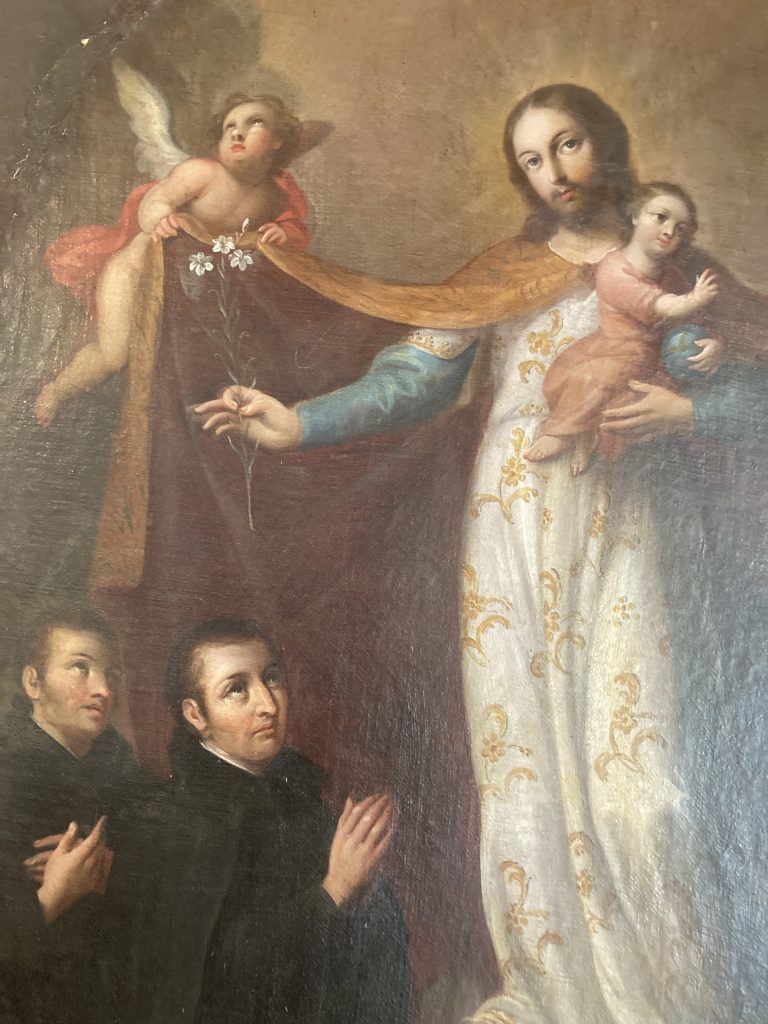3 exceptional restorations
By Carmen Rioja
In some cases, when special interest and resources are dedicated to the preservation of art objects, an exceptional restoration is achieved. A successful restoration is one that manages to rescue the material and spiritual or subjective aesthetic message, to preserve it and ensure its transmission to future generations.
In Mexico, a large number of works from the viceregal period are preserved, since religious artistic production sought to give an outlet to the messianic message of the mendicant orders and the Catholic kings in the Americas. The Baroque period was intense and increasingly sophisticated, giving rise to the creation of excellent painting workshops and masters with a mastery of the compositional arts that reached great beauty between the sixteenth and eighteenth centuries and the early nineteenth century.
In the case of Mexico, the organic deterioration of the artistic and archaeological goods was accelerated by the wars of conquest, independence, revolution and the movement of the Cristeros, historical moments where looting and burning of temples and historical or archaeological sites were frequent.
During the 20th century, the devaluation of certain works, due to the arrival of new fashions, ideologies, decorative objects and futuristic yearnings, further prolonged the deterioration. In the end, very few works managed to survive the dangers and reach our days, despite the onslaught.
The churches still house several of these magnificent works. They are exhibited in altarpieces, oil paintings and estofados saints, as well as in murals, reliquaries, engravings and applied arts, in numerous chapels, churches, convents, museums with diverse collections throughout the country.
However, time weighs on all works of art and is their worst enemy. The agents of deterioration, both chemical and biological that damage them, are innumerable, such as humidity, fire, plagues and those damages caused by failed human interventions and bad handling of the works.
UNESCO establishes the protection of works of outstanding artistic and social value «in danger of disappearing». It is therefore a commitment to preserve the artistic past as a collective act of society.
Here are three examples of successful restorations in Mexico:
- Museo del Templo Mayor y Diosa Tlaltecuhtli, CDMX.
This museum houses pieces that belonged to the culture of the great Tenochtitlán, some of which were excavated in situ in one of the sacred burials. Although flooded in mud, remains of their clothing, necklaces, earrings, carved stones, ceramic vessels, plumary art and a large number of fragments and remains of animals such as birds, xoloitzcuintles, mother-of-pearl shells and snails, among others, were discovered.
These boxes had been hidden under rocks and mud, under several landslides and even among the foundations. It took decades of hard work by restorers and archaeologists to stabilize the materials in controlled laboratory environments.
Today we know that in the case of the great piece Tlaltecuhtli, centerpiece of the Templo Mayor Museum, we could not know its original pigments and colors, or its symbolic complexity without the meticulous and patient intervention of conservation master Virginia Pimentel Chehaibar.
- Museo del Virreinato in Tepotzotlán, State of Mexico.
The amount of oil paintings on large canvases that are displayed throughout the rooms of the National Viceroyalty Museum is extraordinary. It is worth a tour just to appreciate them. But it was not always like this, there was a time when the churches and chapels were abandoned, little by little it was restored and now it can be visited regularly. There you can find the largest collection of easel paintings as well as the patronage of St. Joseph to the company of Jesus. An image that accompanied them to their different convents or missions, such is the example in the scene of the photograph of this article.

- Sanctuary of Jesus Nazareno in Atotonilco, Guanajuato
At the beginning of 1994 the general state of the chapels was deplorable with heavy vandalism, human excrement on the floors of the abandoned chapels of Calvario. Pigeons and bats in the vaults and curtains. Pieces of easel paintings, dirty, covered with cobwebs and already rotten, piled up on the floor.
Some of the figures of the twelve apostles and scenes of the crucifixion had been looted and destroyed and could never be recovered.
Thanks to the efforts of Father Fernando Manriquez and the Asociación Atotonilco, Santuario de la Patria A.C., the company Ciencia y Arte en Restauración rescued the site under the direction of the prestigious Master Restorer Agustin Espinosa Chavez, —who is also the author of the miraculous rescue under the mud of the jungle.




